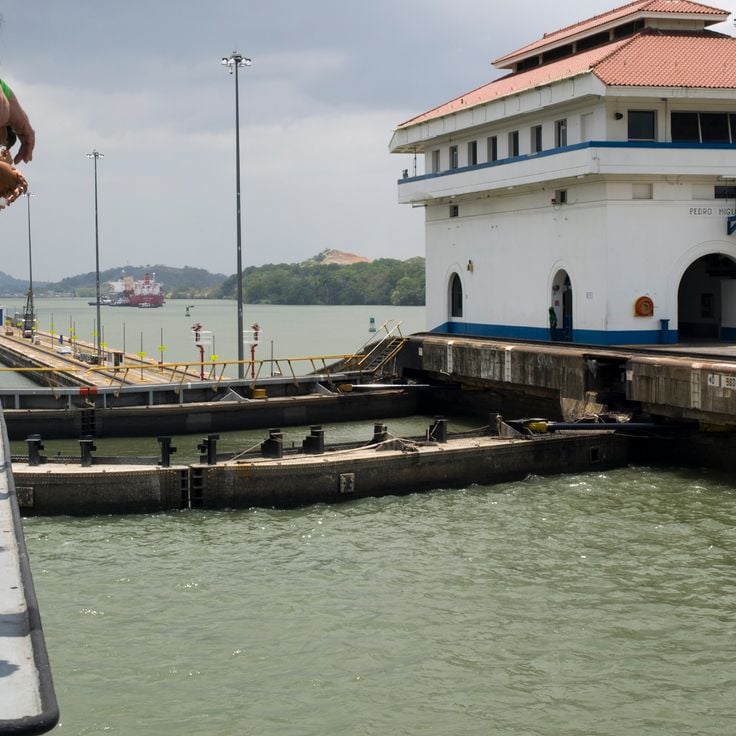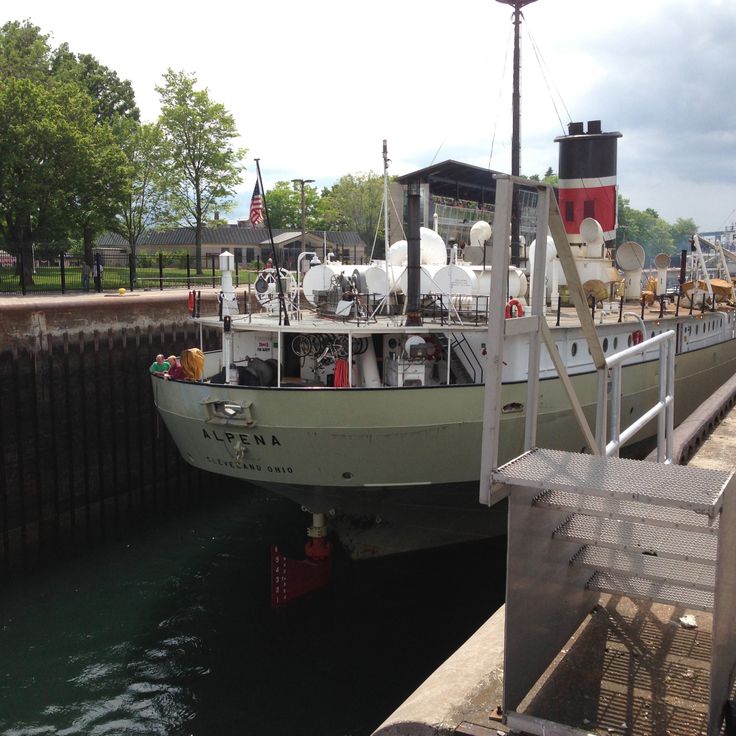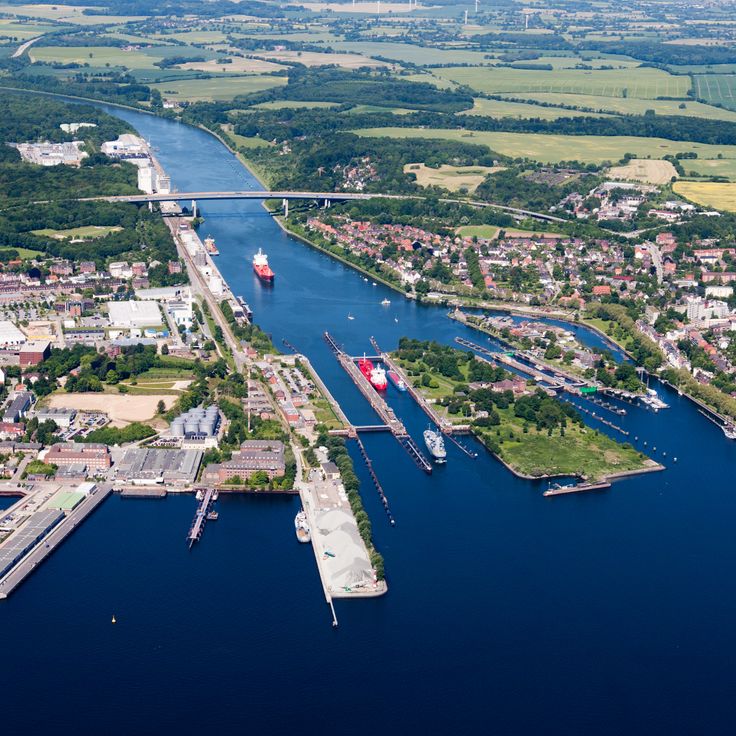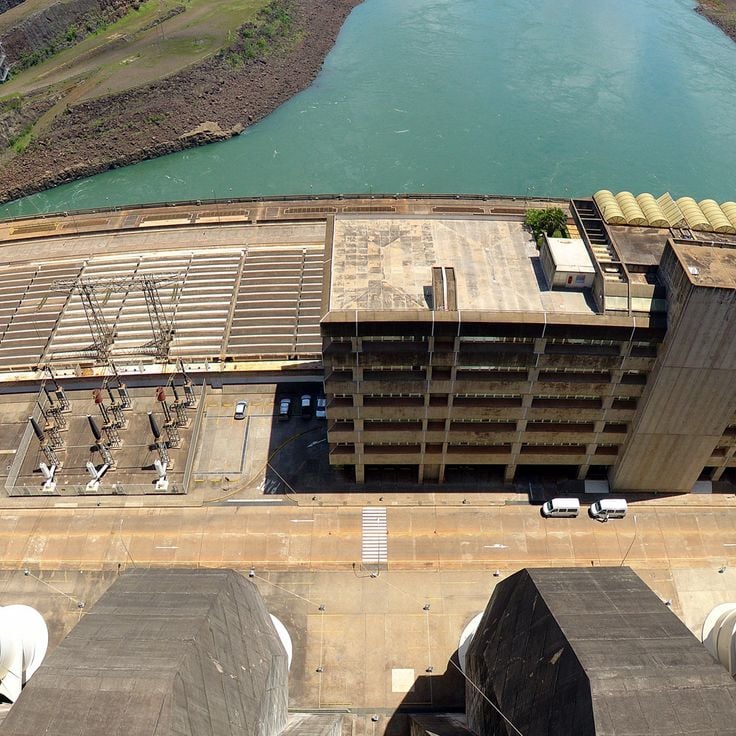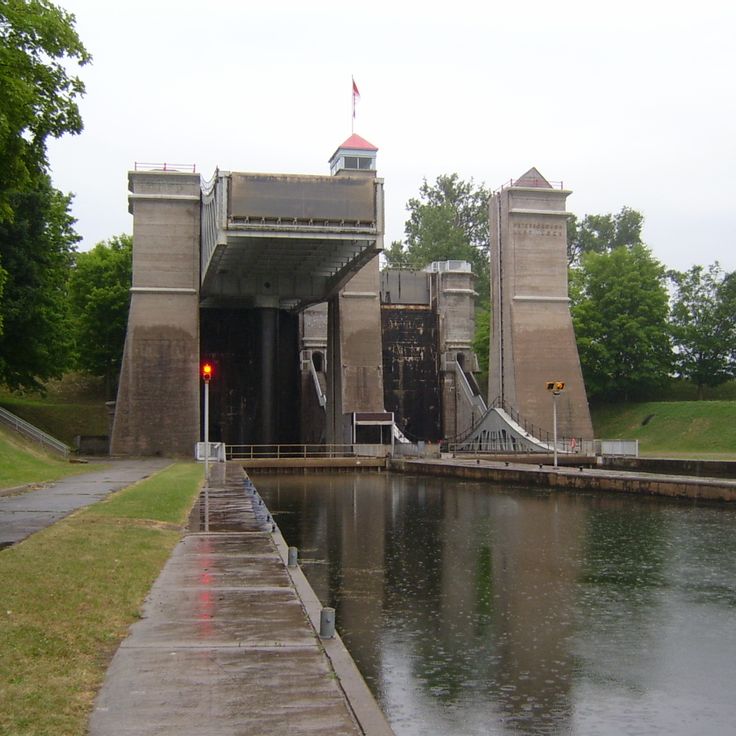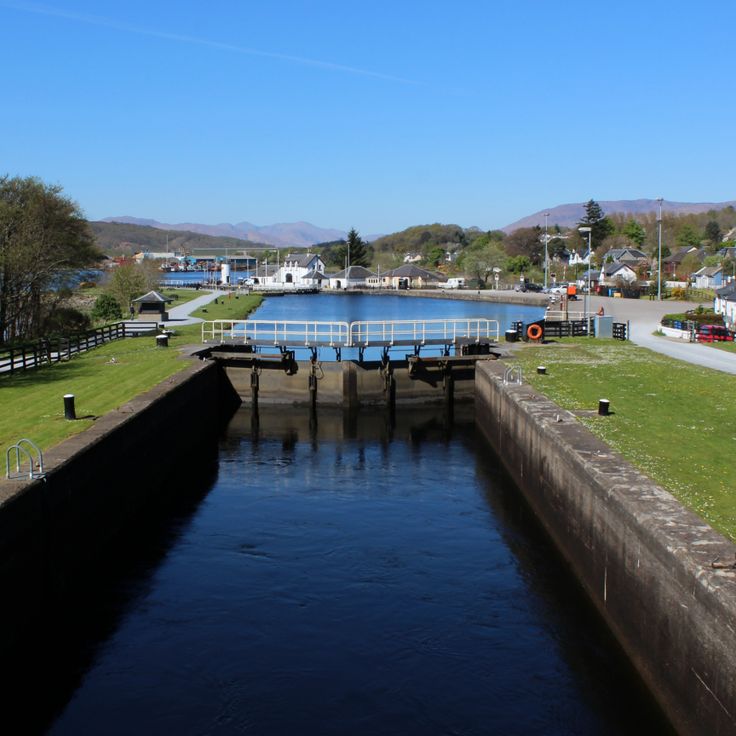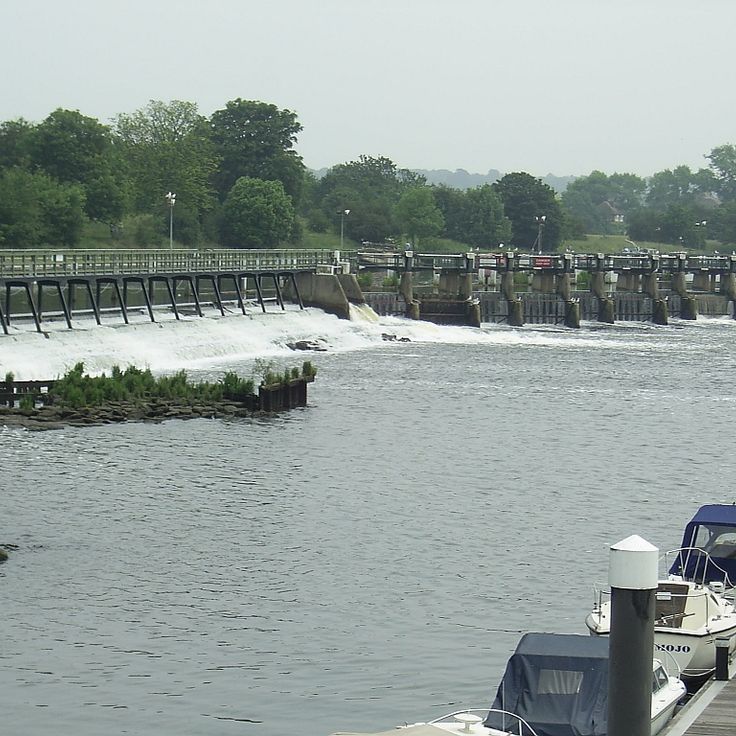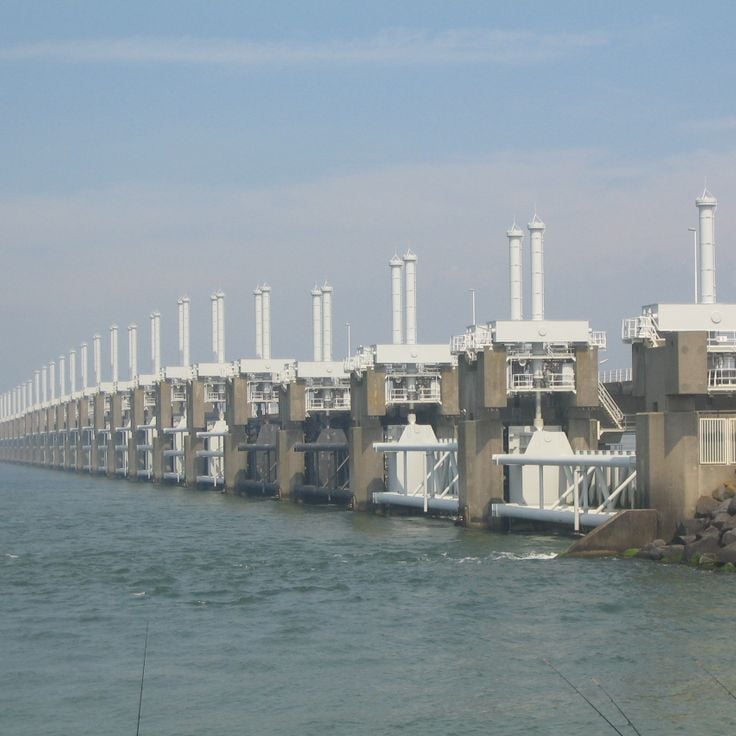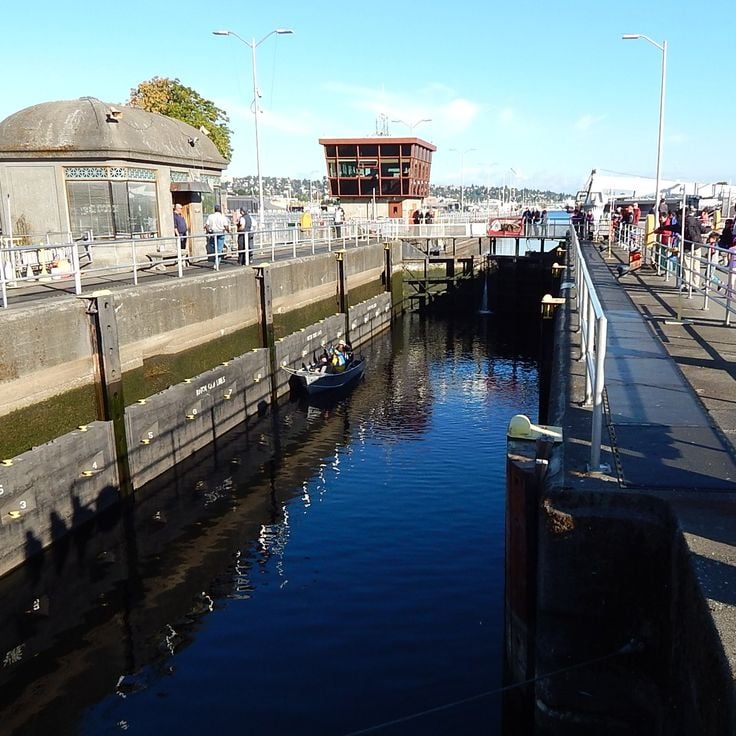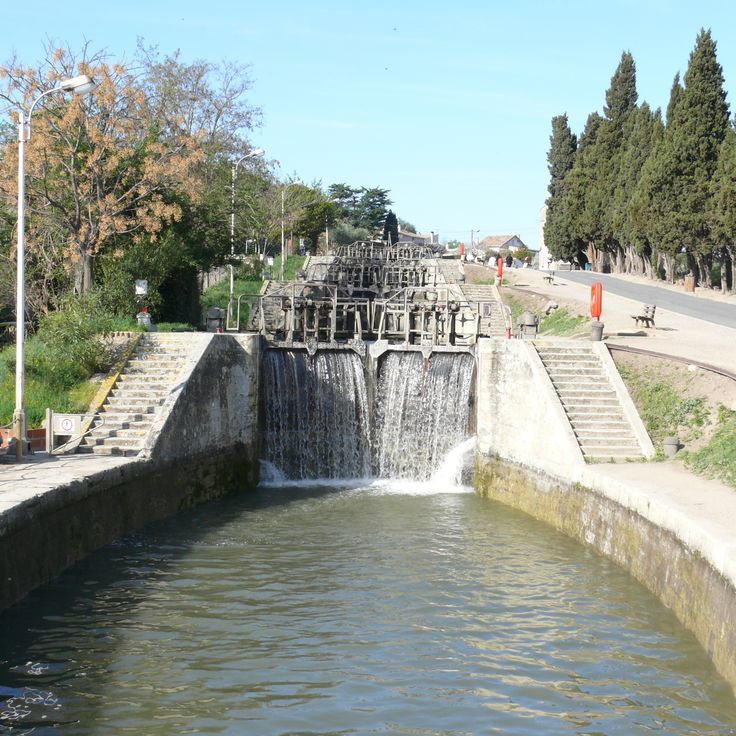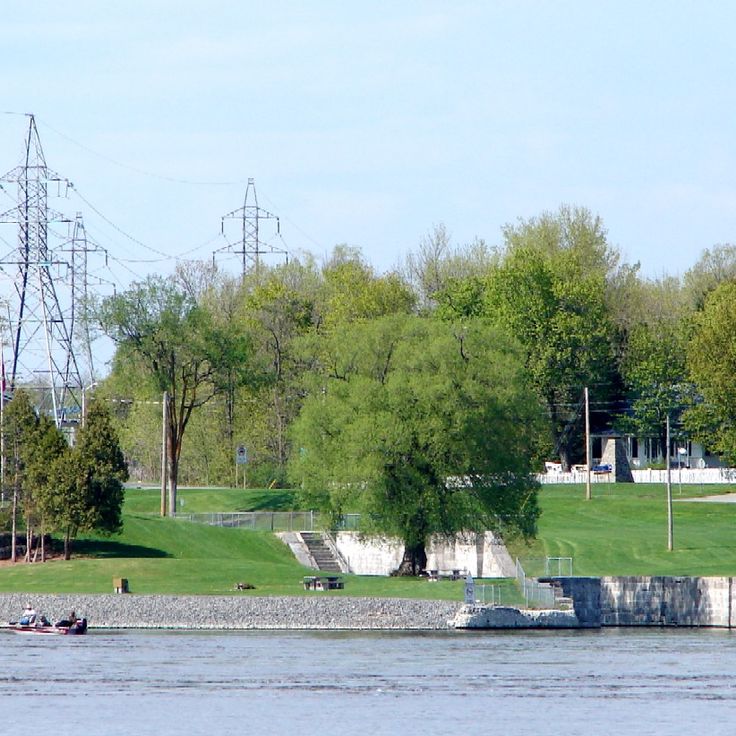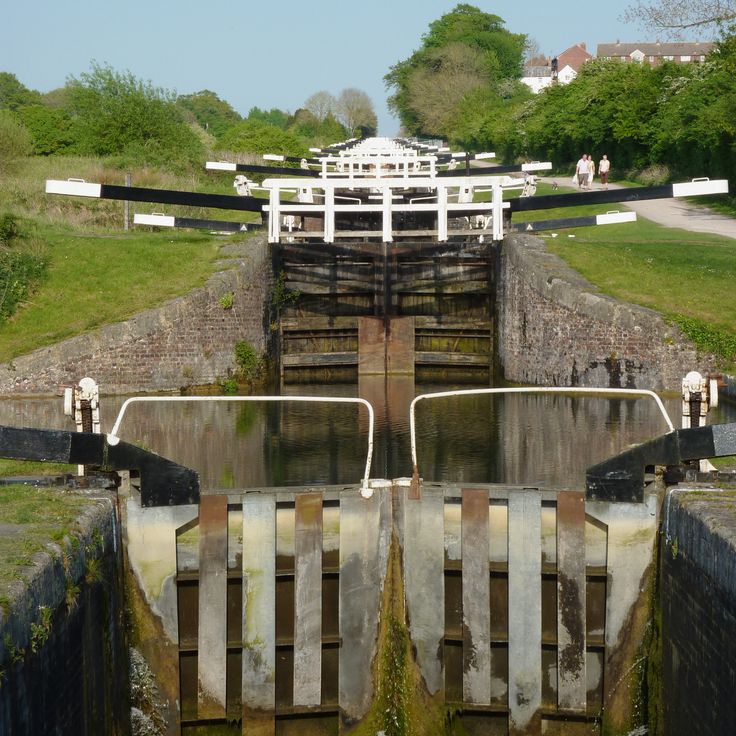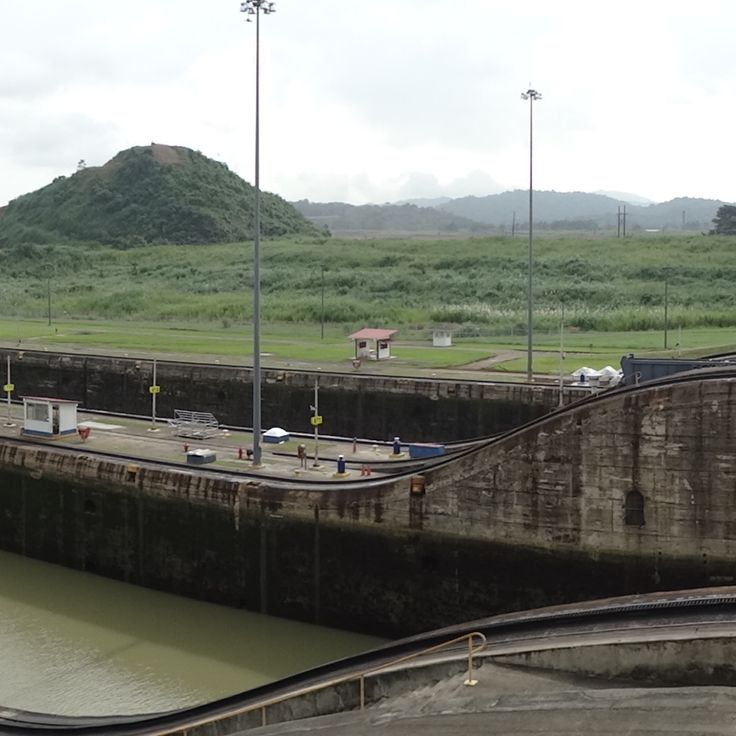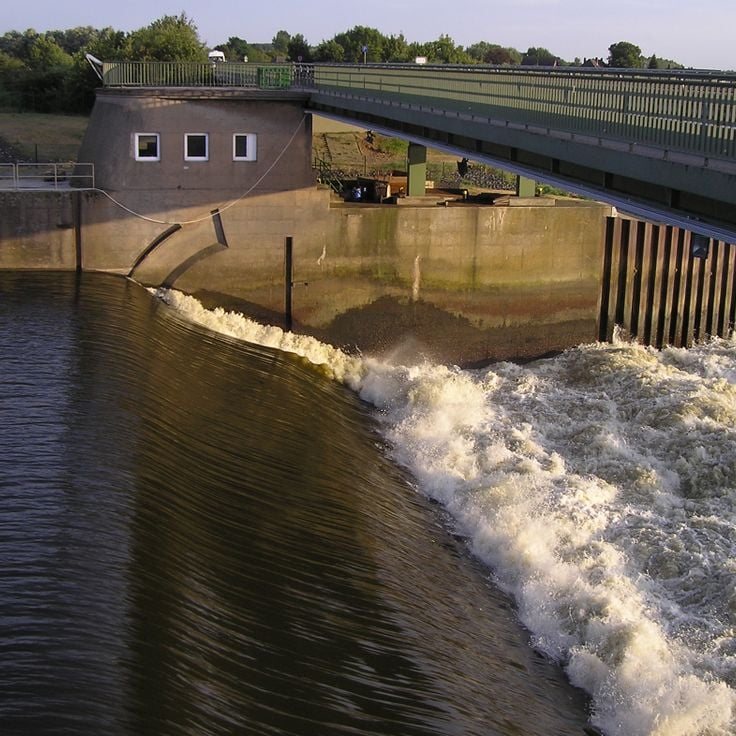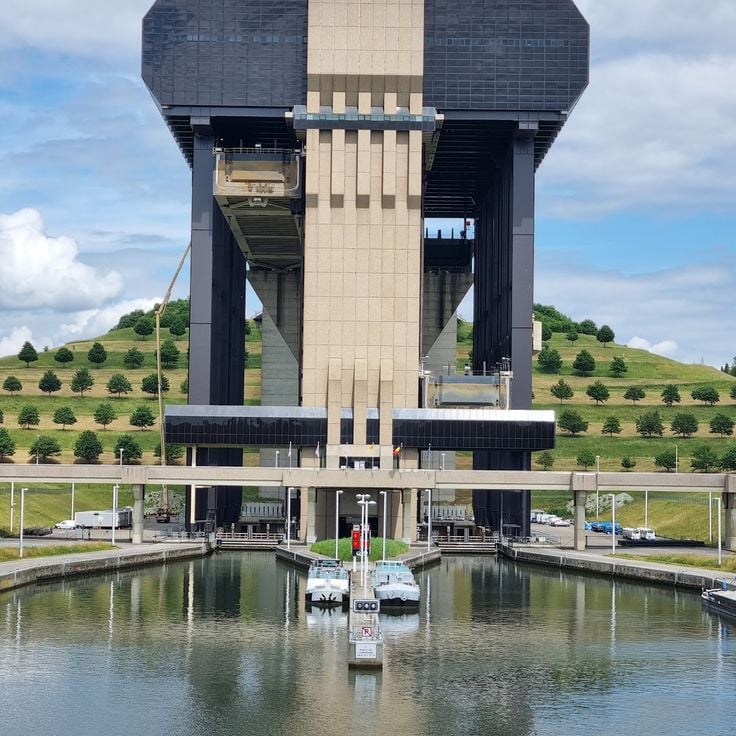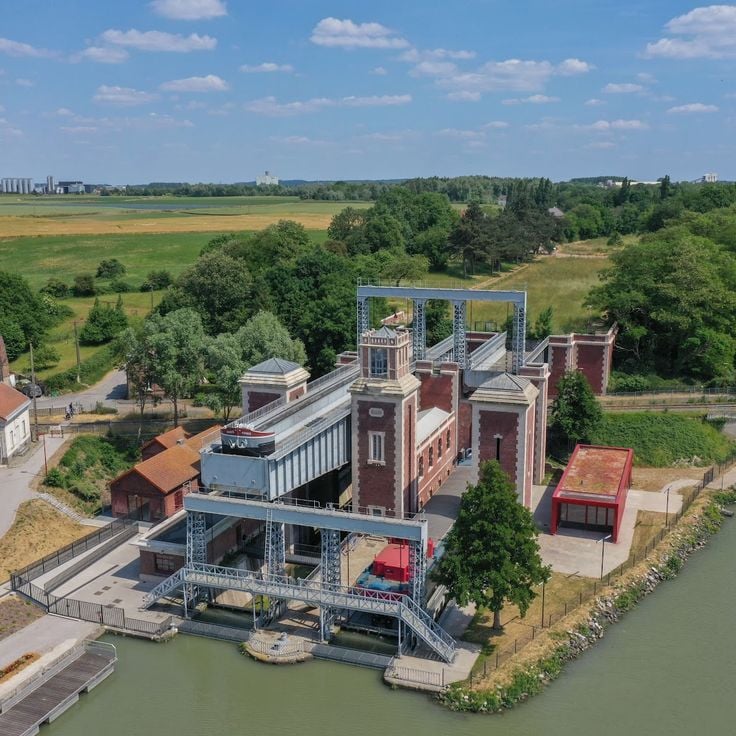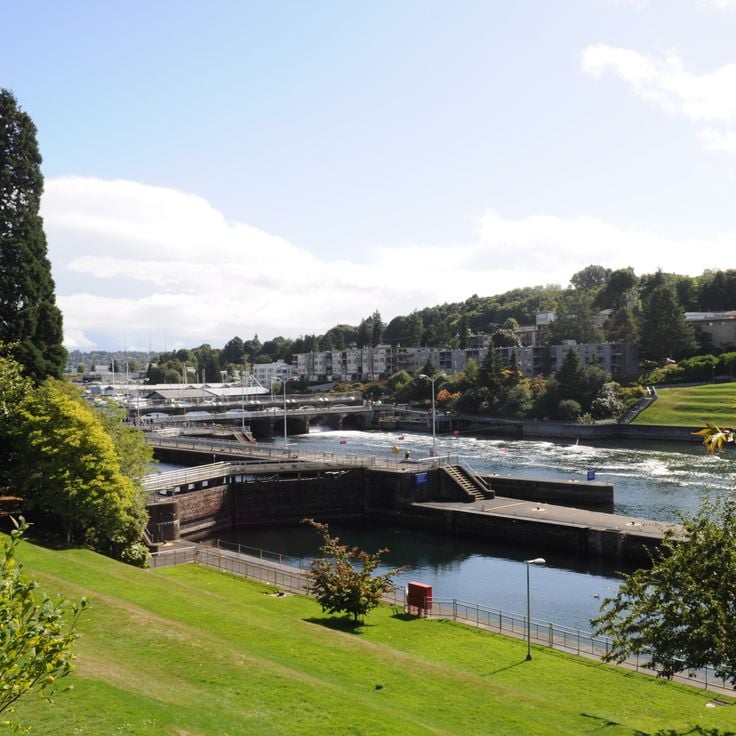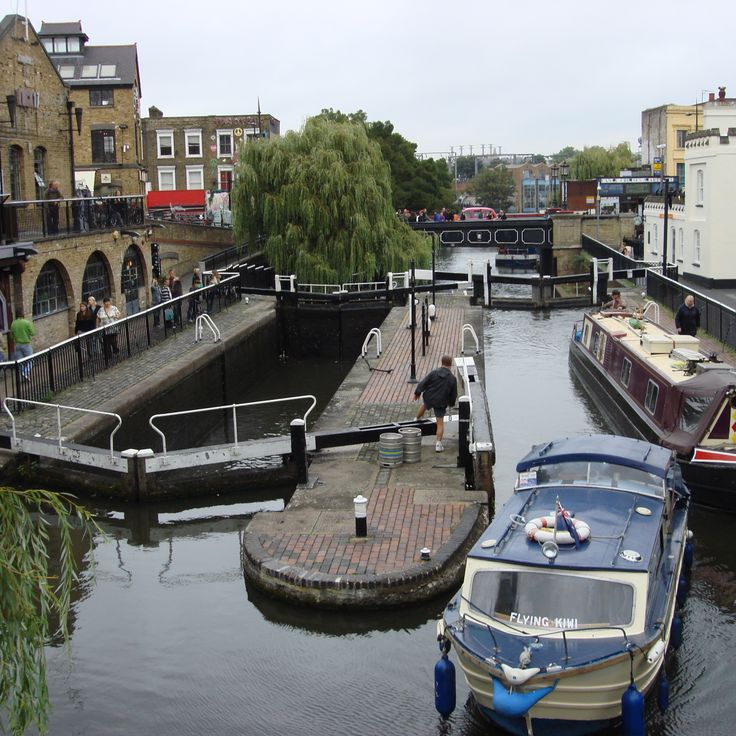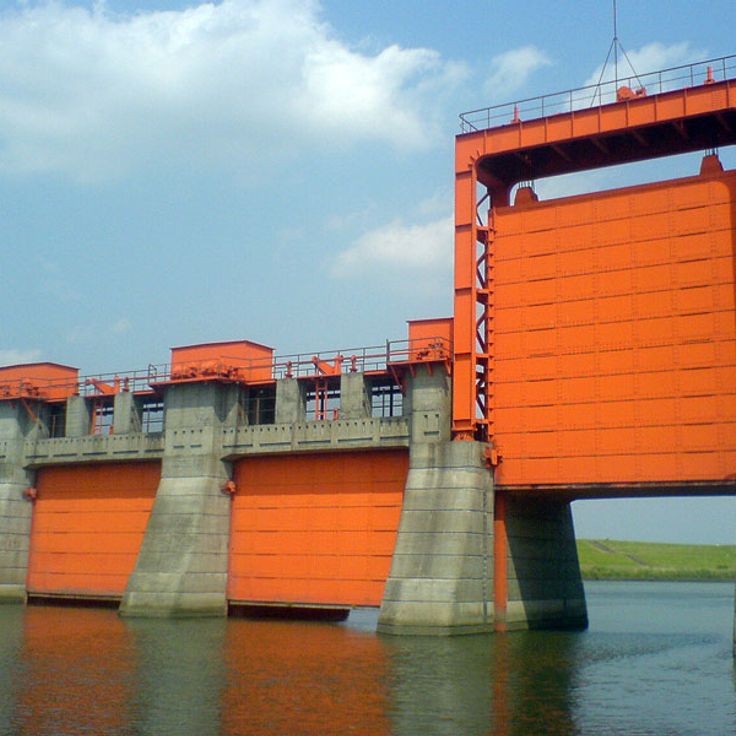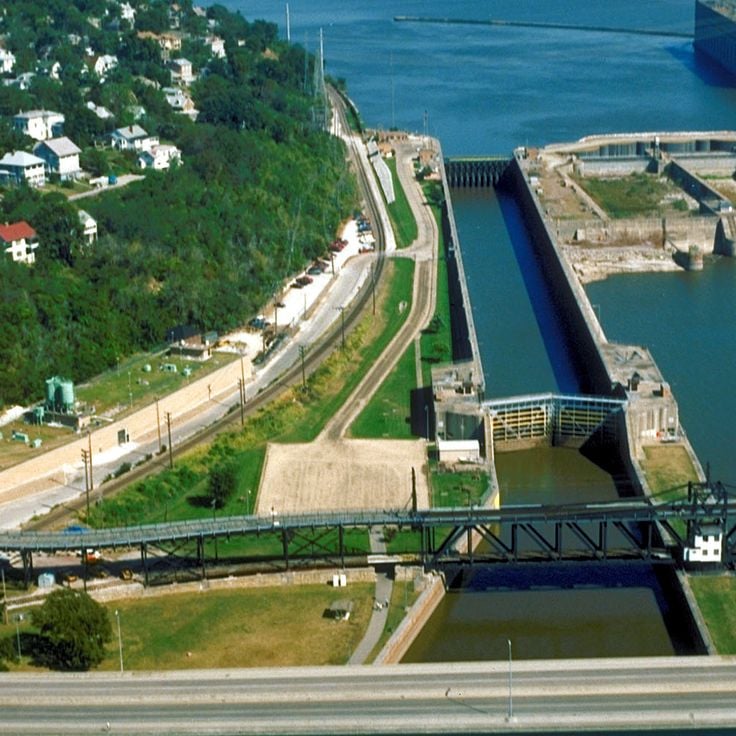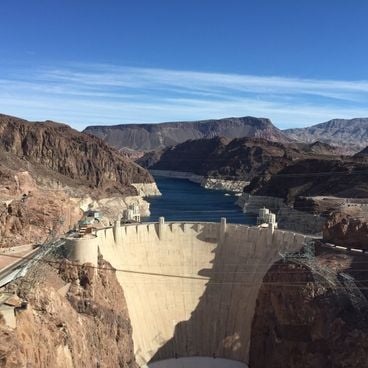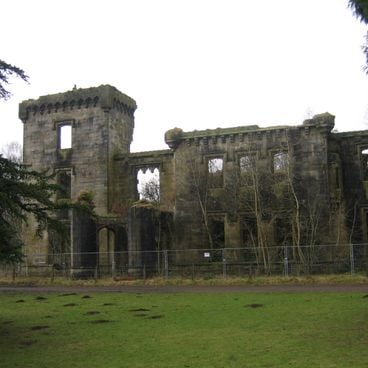Navigation locks are engineering structures that enable ships to pass through significant elevation changes between seas, lakes, and rivers. From the Panama Canal, where vessels rise 86 feet (26 meters) to cross the Isthmus, to the Three Gorges Dam in China, featuring five-stage locks managing a 371-foot (113-meter) height difference on the Yangtze River, these technical facilities have transformed global trade routes. The Soo Locks in the United States connect the Great Lakes, while the Kiel Canal in Germany links the North Sea to the Baltic Sea. Some structures, such as the Itaipu Dam between Brazil and Paraguay, combine navigation and hydroelectric power generation with a capacity of 14,000 megawatts. Others stand out with their innovative technical solutions: the boat lift in Peterborough, Canada, has used a hydraulic system since 1904, while the Falkirk Wheel in Scotland employs a rotating mechanism to lift 24 meters (79 feet). These facilities play a crucial role in international commerce and economic growth of the regions they serve.
This lock system enables the crossing of the Panamanian isthmus by raising ships 85 feet (26 meters) above sea level. The facility connects the Atlantic with the Pacific Ocean through a series of chamber locks that traverse Lake Gatún. Since its opening in 1914, it has fundamentally changed international maritime trade by significantly reducing travel time between the two oceans. The 2016 expansion added larger lock chambers that can accommodate ships carrying up to 13,000 standard containers.
This lock system includes two five-stage lock lines at the Three Gorges Dam, lifting vessels 384 feet (113 meters) to traverse the dam on the Yangtze River. The facility enables navigation through one of the world's largest dams and ensures vessel traffic between the upper and lower reaches of the river. The lock chambers overcome the elevation difference created by the dam in five consecutive stages. The system forms an important component of the infrastructure for freight transportation and navigation on the Yangtze.
This lock system allows vessels to navigate between Lake Superior and Lake Huron by managing a height difference of 21 feet (6.4 meters). The installation forms an important part of the Great Lakes waterway and facilitates the transport of raw materials and goods between the upper and lower lakes. The system consists of multiple lock chambers that accommodate different vessel sizes and contributes to the economic development of the region by ensuring continuous shipping traffic on this major inland waterway.
This lock system connects the North Sea to the Baltic Sea and enables vessels to navigate the water level differences between the two seas. The canal extends for 61 miles (98 kilometers) through Schleswig-Holstein and forms one of the busiest artificial waterways in the world. The facilities include several lock chambers at both ends of the canal, which accommodate approximately 30,000 ships annually and facilitate commercial traffic between the North Sea and Baltic regions.
The Itaipu Dam is a multipurpose hydraulic structure spanning the border between Brazil and Paraguay on the Paraná River. With an installed capacity of 14,000 megawatts, this facility generates electricity for 75 percent of Paraguay's power needs and 17 percent of Brazil's consumption. The dam extends 4.8 miles (7.8 kilometers) in length and creates a reservoir covering approximately 520 square miles (1,350 square kilometers). The powerhouse contains 20 turbine-generator units, and the navigation locks allow vessels to pass through despite the substantial elevation change in the river course.
The Peterborough Lift Lock is a hydraulic lifting installation with a height of 65 feet (19.8 meters) that has operated since 1904 on the Trent-Severn Waterway to overcome the elevation difference between upper and lower water levels. The structure lifts vessels using water-filled chambers and enables the connection of waterways in Ontario. This lift lock represents a functioning example of early 20th-century hydraulic navigation engineering and contributes to shipping operations along this section of the waterway.
The Falkirk Wheel connects the Forth and Clyde Canal with the Union Canal through a rotating boat lift that overcomes a height difference of 79 feet (24 meters). Opened in 2002, the structure consists of two opposing gondolas that each accommodate vessels up to 66 feet (20 meters) in length. The mechanism requires only the energy needed to balance the weight difference between the two gondolas. This engineering solution replaces a historical flight of eleven locks that operated at this location between 1828 and 1933.
The locks of the Caledonian Canal form a system of 29 structures along a 60-mile (97-kilometer) waterway connecting natural lakes in the Scottish Highlands. Thomas Telford designed and built this engineering achievement, completed in 1822, which has served both commercial shipping and recreational traffic between the North Sea and the Atlantic Ocean. The locks enable vessels to navigate the varying water levels between Loch Ness, Loch Oich, Loch Lochy, and the adjacent coastal waters.
This lock has regulated water levels on the Thames River since 1811 and marks the boundary between tidal and non-tidal sections of the waterway. The Teddington facility enables vessel passage between Richmond and the North Sea and features three chambers that accommodate different boat sizes. The lock manages an average water level difference of 7 feet (2 meters), which varies with tidal conditions. The installation includes both lock chambers and a weir for flood control, which serves to protect upstream areas. Approximately 9,000 vessels pass through this engineering structure annually, providing an important connection for both commercial shipping and recreational boats.
The thirteen locks of the Volga-Don Canal form a waterway connection between the two rivers that has operated since 1952, enabling maritime traffic between the Caspian Sea and the Black Sea. The lock system manages an elevation change of 290 feet over a distance of 63 miles. Each lock chamber measures 950 feet in length and 98 feet in width, accommodating vessels with capacities up to 5,000 tons. The canal transports several million tons of cargo annually and serves an important function in inland shipping between southeastern Europe and Central Asia.
The Oosterscheldekering is a storm surge barrier in the Dutch province of Zeeland, consisting of 62 steel piers and closable gates. The structure spans 5.5 miles (9 kilometers) between Schouwen-Duiveland and Noord-Beveland and protects coastal areas from flooding while allowing tidal saltwater exchange in the Oosterschelde estuary. This barrier regulates water levels through controlled lock gates that remain open under normal weather conditions and close only during storm surges. The structure forms a central component of the Dutch Delta Works.
These locks connect Lake Washington to Puget Sound and have allowed the passage of vessels since 1917 between the freshwater lake and the saltwater sound. The Hiram M. Chittenden Locks include two lock chambers: the large lock measures 800 feet (244 meters) in length and 80 feet (24 meters) in width, while the small lock is 150 feet (46 meters) long and 30 feet (9 meters) wide. The facility manages an average elevation change of 20 feet (6 meters) and serves both commercial and recreational watercraft. The locks are part of a system that also includes a fish ladder through which thousands of salmon pass annually on their migration from the ocean to their freshwater spawning grounds.
The Fonserannes Locks consist of eight consecutive chambers on the Canal du Midi near Béziers, overcoming an elevation difference of 69 feet (21 meters) over a distance of 985 feet (300 meters). Completed in 1697 following the designs of Pierre-Paul Riquet, this engineering structure enables navigation between the Mediterranean Sea and the Atlantic Ocean through Languedoc. The original eight-step configuration was reduced to seven chambers in 1856, and since 1984 a modern lock adjacent to the historical structure handles traffic. The Fonserannes Locks demonstrate hydraulic engineering techniques from the 17th century and form part of the UNESCO World Heritage Canal du Midi.
The locks of the Rideau Canal form a historic network of waterways in Canada's capital city of Ottawa. Completed in 1832, this canal extends 125 miles (202 kilometers) between Ottawa and Kingston on Lake Ontario and includes 47 locks, most of which are still operated manually. The system was originally designed for military purposes as a secure route between Montreal and the Great Lakes, and today serves recreational boating. The eight locks at Parliament Hill form the technical core of the canal and allow navigation through a height difference of 80 feet (24.4 meters) to the Ottawa locks. During winter, the central section transforms into the world's longest skating rink at 4.8 miles (7.8 kilometers) in length.
The Carillon Canal Lock is a historic structure that documents the history of canal transportation in Canada. This facility demonstrates the engineering solutions developed to overcome the elevation changes along the Ottawa River and enable navigation between different waterways. The structure illustrates the importance of waterways for the economic development of the region and the role of lock technology in establishing trade routes during the 19th and 20th centuries.
The Caen Hill Locks form a cascade of 29 lock chambers extending over 2 miles along the Kennet and Avon Canal, constructed between 1794 and 1810. This engineering structure manages a vertical rise of 237 feet (72 meters) and enables vessels to traverse between different water levels in this region of southwest England. The installation demonstrates the engineering capabilities of the British canal era and today serves both recreational traffic and historical documentation of early navigation technology.
The Miraflores Lock at the Panama Canal lifts ships in two stages through a total rise of 52 feet (16 meters) and forms the Pacific entrance to the canal. This lock allows vessels to move between sea level and Miraflores Lake. The facility contains two parallel lock chambers, with the larger one measuring 1,100 feet (335 meters) long and 110 feet (33 meters) wide. A visitor center adjacent to the lock provides observation platforms where ship transits through the chambers can be watched, while an exhibition explains the technical operation and economic importance of the canal for world trade.
The Geesthacht Barrage is a river weir on the Elbe River in Geesthacht that has controlled the river since 1960 and manages a water level difference of about 13 feet (4 meters). The facility includes a lock with two chambers measuring 755 feet (230 meters) in length and 82 feet (25 meters) in width, allowing passage for inland vessels and recreational boats. The weir consists of five openings with a total width of 427 feet (130 meters) and serves to regulate the Elbe water level, while the adjacent lock maintains shipping traffic between Hamburg and the Czech waterways.
The Strépy-Thieu boat lift raises vessels across a height of 240 feet (73 meters), connecting different water levels of the Canal du Centre in Belgium. This structure, operational since 2002, replaced four historic hydraulic lifts from the 19th century and allows freight vessels up to 1500 short tons (1350 metric tons) to travel between the Meuse and Scheldt river basins. The lift features two independent caissons, each holding 78000 cubic feet (2200 cubic meters) of water, and manages the elevation change in approximately seven minutes. The construction employs a counterweight and electric motor system that guides the two caissons along parallel tracks.
The Fontinettes boat lift in Arques represents a hydraulic elevator constructed between 1881 and 1887 to overcome a 43-foot (13-meter) difference in elevation on the Canal de Neufossé. This installation allowed inland vessels weighing up to 330 tons (300 metric tons) to be transported through a system of five parallel locks, and constituted a significant technical achievement for inland navigation in the late 19th century before being replaced by a modern lock in 1967.
The Ballard Locks in Seattle enable vessels to transition between the saltwater areas of Puget Sound and the freshwater levels of Lake Washington and Lake Union. This facility, which opened in 1917, includes a large lock measuring 800 feet in length and 80 feet in width (244 meters by 24 meters), along with a smaller lock for recreational boats. The Locks manage an average elevation difference of approximately 20 to 26 feet (6 to 8 meters) between the two water systems. Annually, about 50,000 vessels pass through this lock system, which serves both commercial fishing and private boats and incorporates a fish ladder for migrating salmon.
This lock on the Regent's Canal in Camden Town is one of nine historic lock installations built to overcome a 89-foot (27-meter) elevation difference between Limehouse Basin and Paddington Basin. Hampstead Road Lock is located in central London and has served navigation between the inner city area and the eastern Thames docks since the canal opened in 1820. The structure features traditional hand-operated lock gates and a massive brick construction that maintains water containment over a length of approximately 75 feet (23 meters). This facility forms part of the strategic waterway connection that transported coal, building materials, and other trade goods through London and now serves recreational boating.
The historic Iwabuchi Sluice Gates regulate water flow between the Arakawa River and the Shingashi River in Shimo, Tokyo. Completed in 1924, the facility was built following severe floods that affected Tokyo in 1910. The sluice gates comprise nine openings with a total width of 630 feet (192 meters) and can handle a maximum discharge of 124,000 cubic feet per second (3,500 cubic meters per second). The structure originally served flood control and tidal flow regulation purposes in the region. The gates represented a significant engineering achievement at the time of their construction and contributed to the development of urban water management in Tokyo.
The Keokuk Lock and Dam No. 19 is located on the Mississippi River in Iowa and forms an essential part of the waterway system in the upper Mississippi region. Built between 1910 and 1913, this facility combines a hydroelectric power plant with a navigation lock that allows vessels to overcome an elevation change of approximately 40 feet (12 meters). The power plant generates electricity from the river's flow, while the lock maintains commercial and recreational traffic on this important inland waterway. The complex contributes to water level regulation and flood control. The technical infrastructure connects multiple functions and serves freight transportation as well as regional power supply along the Mississippi.
